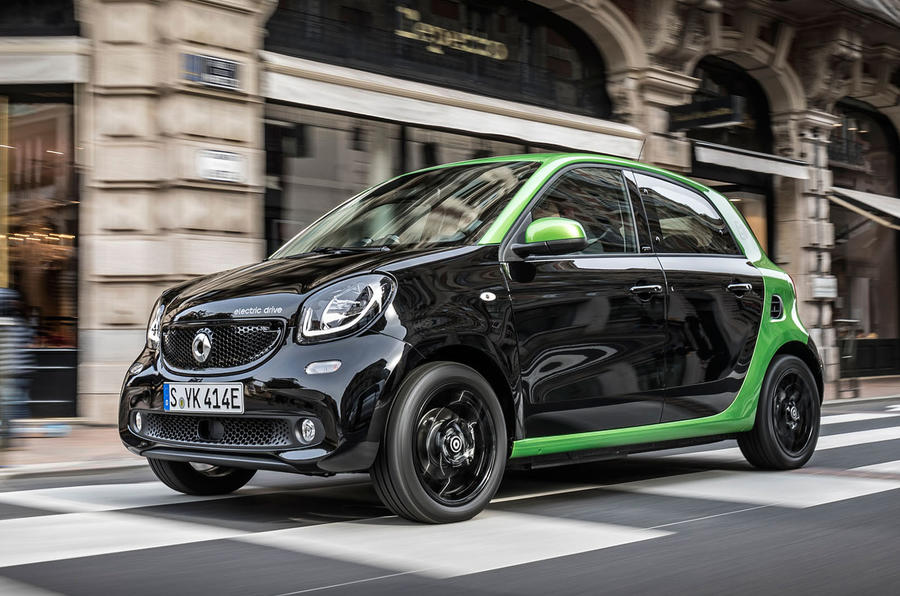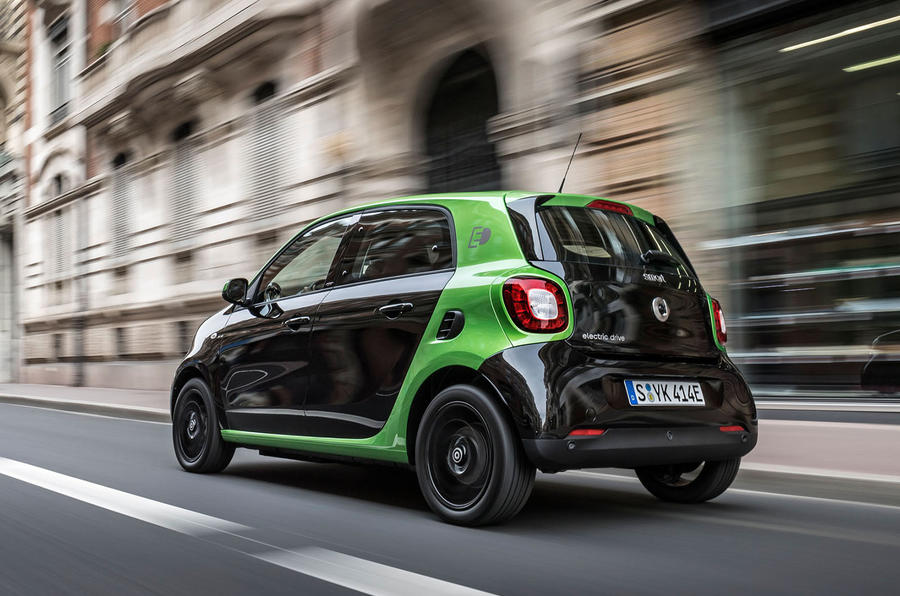
What is it?
Indeed electric models were planned right from the outset for Smart, but previous electric efforts have disappointed, and sales success has only been modest in the UK.
The latest Smart range is a big step forward, and this fourth-generation electric model could prove to be as well. It can be charged up to twice as fast as the battery in the model it replaces and it comes with a slightly longer range, more power and extra smartphone connectivity.
Previously, you could only get the two-door Fortwo as an electric car, but now for the first time you can get an electrified Forfour. It gets a new rear-mounted electric motor from Renault and a 17.6kWh battery that’s good for 80bhp, 118lb ft of torque and a claimed range of 96 miles.
The Forfour ED sounds a promising prospect for city-bound electric vehicle (EV) drivers, but the electric car revolution continues apace and it faces tough competition from the recently updated Volkswagen e-Up, as well as established market lynchpins like the Renault Zoe and Nissan Leaf.
We’ve already driven a US-spec Fortwo ED, but this is our first taste of the four-door Forfour ED, which Smart believes will be the best-selling of its three EVs.
What's it like?
You won’t be surprised to hear that the city is its natural environment, and it is there that the electric Smart excels.Like all electric cars, it has a strong burst of acceleration from a standstill. While the Forfour’s 0-62mph time of 12.7sec shows it’s not especially quick over a distance, its nippy acceleration from 0-30mph is a great asset around town, plus a new electronic management system makes progress smoother than before.
But with the extra doors, seats and added weight that comes with the Forfour’s layout, it loses some of the urgency that you feel in the Fortwo ED’s acceleration, and it’s more than 1sec slower from 0-60mph.

The Forfour ED's electric battery adds around 140kg of weight to the car compared with the petrol model, and because it’s in the bottom of the car it gives it a lower centre of gravity which helps it handle better.
The steering, like the petrol car, is very light and lacks feel but it is at least precise. Although not quite as gobsmacking as the Fortwo, the Forfour still boasts a brilliantly tight turning circle of 8.65m which makes manoeuvers a breeze in town. The ride isn’t bone-shaking, but it is still unsettled. Having said that, firmer springs and dampers than the petrol Forfour, as well as that added weight, give it much better body control, and long stretches in town aren’t uncomfortable.
The brake pedal feel is a little spongey, but the off-throttle regenerative braking is effective. The car comes with an Eco mode that you can engage which limits its maximum speed, softens the accelerator pedal response and sets the regenerative braking system to maximum to eek out some extra miles of range. When left in standard mode the car uses radar sensors to judge how hard the regenerative braking should be when you lift off the accelerator, depending on the traffic around the car.

Out on the open road at faster speeds, the Smart is far less at home. It feels a bit underpowered, the steering doesn't weight up, and you get a fair bit of wind noise and road roar, but at slow speeds the cabin is a very serene and peaceful environment.
Inside, there’s a decent amount of standard tech including cruise control, Bluetooth, climate control and a touchscreen infotainment system including TomTom sat-nav with the latest version of Smart’s media system, which is pretty intuitive, and the cabin generally feels premium in small-car terms. It also gets some handy smartphone connectivity with a new browser-based web-app that allows you to check on the car's charging status and remotely control the heating.
While the Fortwo offers only marginally more storage room than a handbag, the Forfour has two rear seats that can be folded away to increase the boot capacity. The battery is housed under the floor which means the electric version doesn’t lose any extra space over the petrol version either.
It's worth pointing out that the very first cars that reach the UK later this year will take six hours to get an 80% charge from a household socket, or 3.5 hours from a wallbox for the same. However in 2018, electric Smarts will get inbuilt 22kW fast chargers, which take 45 minutes for an 80% charge - it's a rather irritating oversight to not offer the fast charger straight away, so you're certainly better off waiting to buy that version.
Should I buy one?
UK pricing is yet to be finalised but with an expected asking price of £17k after the Government grant - it is expensive. That price pitches it towards the upper reaches of the Smart lineup, but if you were thinking of a top-spec petrol Forfour then this offers a compelling case to go electric within the Smart range instead. It’s also likely to be only £500 more expensive than the smaller Fortwo Electric Drive, and is around £3000 cheaper than the Volkswagen e-Up and undercuts the Nissan Leaf and Renault Zoe. Ultimately though, all those cars offer a better electric car experience than this Forfour ED because they have bigger ranges, more space, and are a bit better to drive.
The usual strict electric car caveats apply. It has to be able to fit in with your lifestyle – a likely 75-mile range in the real world certainly won’t suit everyone – but if it does then this characterful electric city car is worth considering.
source : http://www.autocar.co.uk/car-review/smart/forfour/first-drives/smart-forfour-electric-drive-2017-review




